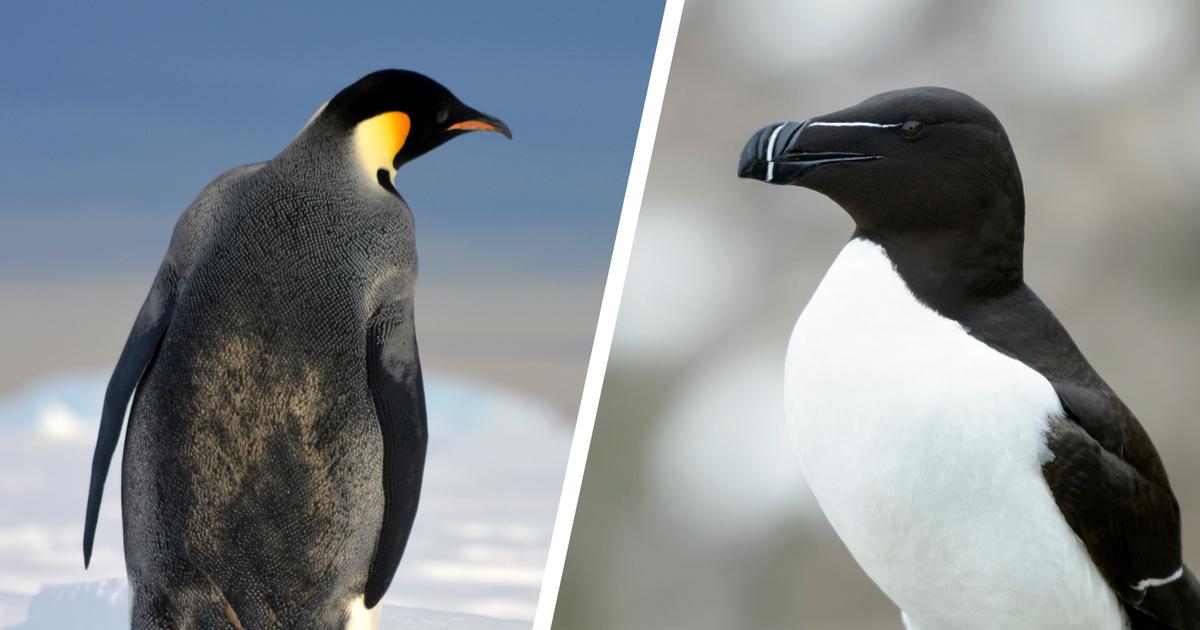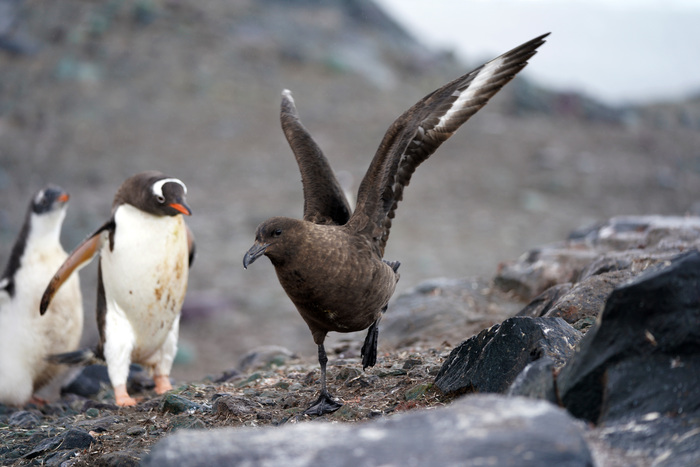Extreme maritime and climatic conditions in northern Europe -possibly related to climate change- have caused a massive flight of seabirds such as the Common Auk (Alca torda) which, in order not to die of hunger and cold, has arrived in a " unheard of” to Catalonia, the Balearic Islands, Italy and Greece.
In the absence of certainty, this is the possible justification that scientists give to the "strange behavior" of these birds, according to the zoologist, head of the Fauna Conservation section of the Generalitat, Ricard Gutiérrez.
More than a hundred specimens have reached the Catalan coast, so weak that at this moment 33 have died and 17 are critical in a fauna recovery center.
The specimens of this species, included as "vulnerable" in the catalog of threatened fauna of Catalonia,
The razorbill does not usually come close to land because it feeds on small fish in coastal areas between 20 and 40 meters deep, but since the 19th in Catalonia several specimens of between 38-41 cm in average length have been sighted, with the back of black color and white ventral part, similar to a penguin.
They are sheltered, feeding and looking for some warmth in Cap de Creus, in various fishing and sports ports such as Palamós, Barcelona and Blanes, where it was seen warming up at the outlet of the cooling waters of a fishing boat.
This seabird inhabits very northern latitudes such as Scandinavia and Greenland and normally endures very cold conditions without suffering.
In Catalonia it appears only in winter, especially from the British Isles.
Some time ago more copies had arrived,
but problems with breeding colonies or avian flu in northern Europe caused the numbers to decline a lot.
The maximum of the last 15 years was in 2010, 98 were seen, since then only twenty have been reached.
This great decline led to its inclusion in the list of "vulnerable" birds in the Catalog of endangered native wild fauna, which was published in September, and, therefore, it is susceptible to management and conservation measures to prevent its disappearance.
“Something very serious had to happen, an abnormal phenomenon, to cause something never seen in half a century in seabirds, a Tempero Leak.
It consists of extreme marine or climatic conditions, very low temperatures, strong winds, large waves that leave them without food and they must flee to avoid dying”, indicates Ricard Gutiérrez.
"Desperate, they reached Gibraltar and went up here, where they have arrived very badly," explains the expert from the Generalitat, who laments that "they are so weak that according to the veterinarians, their stomach cannot even digest."
“Instead of staying where they find food, like in Catalonia or further south, they keep flying to France or Italy.
We assume that they are disoriented and we do not know the reason for this non-stop flying of some specimens”, points out the zoologist.
From the autopsies they know that they do not have bird flu or are sick, they die of hunger, of weakness.
"They began the migration to the south without having been able to prepare by accumulating fat and they have lost a large part of their musculature when they flew here," says Gutiérrez, who details that "most of the dead are specimens born this year that have no experience."
There is no information from scientists from the Nordic countries about the cause or place of the leak, which is why they believe that it happened on the high seas.
"It is an exceptional event probably related to climate change, with an apparent rapid drop in water temperature in arctic latitudes and bad weather where they were, we don't know exactly where," Gutiérrez details.
This theory would be reinforced by the arrival of other pelagic marine species, such as a species of gull rare on the western European coasts and in the interior of Catalonia, the Kittiwake (Rissa tridactila).
In this case, it entered through Galicia and the Bay of Biscay to Catalonia, where six specimens have been seen in Lleida, Barcelona and Girona.
The University of Girona, commissioned by the Generalitat, is working on a management plan for the species that should help in its conservation in the wintering areas of the Catalan coast.
The researchers will be the ones already working on the management plan for the Shag, another “vulnerable” seabird.
The citizen science portal 'ornitho.cat' has collected 478 observations in the last 10 days, some of them repeated, so it is still difficult to know the real number.
"This is a message, an alert that nature gives us about the consequences of climate change and the fragility of species that are theoretically resistant to severe natural conditions," says Ricard Gutiérrez.
You can follow EL PAÍS Catalunya on
and
, or sign up here to receive
our weekly newsletter
Subscribe to continue reading
Read without limits
Keep reading
I'm already a subscriber





/cloudfront-eu-central-1.images.arcpublishing.com/prisa/GLQIPWOC3VBT3BKZRNAZOQJEQU.jpg)


